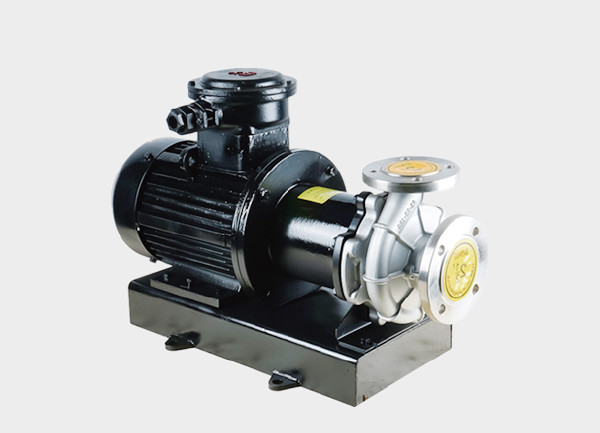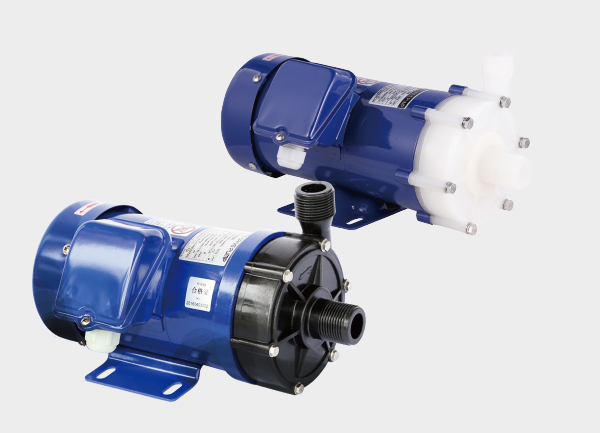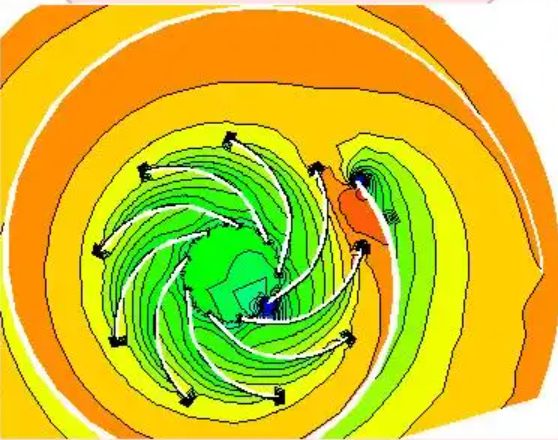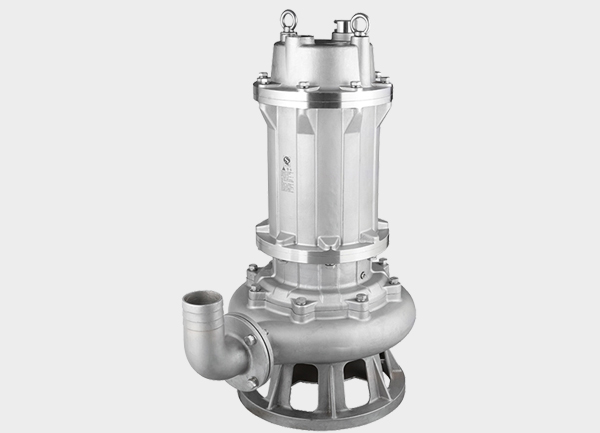Stainless steel magnetic drive pumps are leak-free fluid transfer devices designed based on the magnetic coupling transmission principle. Their core features include “static seals replacing dynamic seals” and “corrosion resistance of stainless steel materials”. Widely used in industrial scenarios with strict requirements for fluid tightness, purity, and equipment corrosion resistance, they are key equipment for solving the challenges of transferring corrosive, flammable, explosive, toxic, and hazardous fluids.
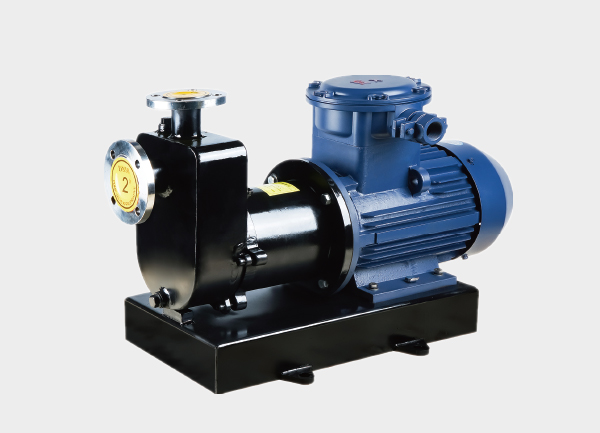
1. Working Principle: Contactless Power Transmission via Magnetic Coupling
A stainless steel magnetic drive pump mainly consists of five components: drive motor, outer magnetic rotor, isolation sleeve, inner magnetic rotor, and centrifugal pump assembly. The power transmission process follows the physical law of “magnetic field penetrating non-magnetic conductive media to transmit torque”, with the specific steps as follows:
- Power Input: The drive motor drives the outer magnetic rotor (rigidly connected to the motor shaft, in the atmospheric environment) to rotate. The outer magnetic rotor contains permanent magnets, which generate an alternating magnetic field when rotating.
- Magnetic Field Penetration: The magnetic lines of force of the magnetic field can penetrate the isolation sleeve (in a static state, hermetically connected to the pump body) made of non-magnetic conductive stainless steel, forming a closed magnetic circuit.
- Rotor Synchronization: Driven by the magnetic force, the inner magnetic rotor (rigidly connected to the pump shaft and impeller, immersed in the transferred fluid) rotates synchronously with the outer magnetic rotor without mechanical contact.
- Fluid Transfer: The inner magnetic rotor drives the impeller to rotate. Under the action of centrifugal force, the fluid enters through the pump suction port, is accelerated by the impeller, and then is discharged through the outlet, completing the fluid transfer process.
The core advantage of this process lies in that the isolation sleeve completely separates the transferred fluid from the external power system, eliminating the dynamic seal structure of traditional pumps. This fundamentally eliminates the leakage risk at the dynamic seal and achieves “zero-leakage” transfer.
2. Selection of Stainless Steel Materials: Based on Corrosion Resistance and Scene Adaptability
The “wetted parts” of the pump (components in direct contact with the transferred fluid, including the pump body, impeller, isolation sleeve, and pump cover) are all made of stainless steel. The selection is based on the corrosion characteristics of the transferred fluid, and the mainstream materials and their application scenarios are divided into two categories:
- 304 Stainless Steel: Its core composition includes 18% chromium (Cr), 8% nickel (Ni), and no molybdenum (Mo) element. With a medium corrosion resistance level, it is mainly suitable for anti-weak corrosion scenarios, such as the transfer of fruit juices and vinegar in the food industry, weak acid-alkali cleaning fluids in the light industry, and neutral wastewater in the municipal environmental protection field.
- 316L Stainless Steel: Its core composition includes 16% chromium (Cr), 10% nickel (Ni), and 2%-3% molybdenum (Mo) element. With a high corrosion resistance level, it can be used in anti-strong corrosion scenarios, such as the transfer of hydrochloric acid, sulfuric acid, and organic solvents in the chemical industry, liquid medicines and sterile solvents in the pharmaceutical industry, and sulfur-containing media in the petrochemical field.
Selection Logic: Ordinary carbon steel or cast iron materials are prone to electrochemical corrosion in acidic, alkaline, and salt-containing fluids, leading to component damage and fluid contamination. In contrast, stainless steel forms a dense oxide film (passive film) through chromium elements, and molybdenum elements enhance the resistance to strong corrosive ions such as chloride ions, ensuring the long-term stable operation of the equipment without contaminating the transferred fluid.
3. Safety Features and Usage Limitations: Boundary Conditions Based on Physical Principles
3.1 Inherent Safety Protection Mechanism
Magnetic coupling transmission has a “torque limit”: when the pump is overloaded due to foreign object jamming (such as impeller blockage by solid particles) or excessive outlet pressure, the magnetic force between the outer magnetic rotor and the inner magnetic rotor cannot overcome the resistance, resulting in relative slipping (no longer rotating synchronously). This process can prevent the drive motor from burning due to “locked-rotor” (sudden current surge and winding burnout), which is equivalent to a built-in “non-contact overload protection device”.
3.2 Strict Usage Limitations
- No Idle Operation Allowed: Without fluid, there is no liquid lubrication and cooling between the impeller and the pump body. High-speed rotation will cause dry friction of components, generating high temperatures instantly, which may damage the sealing performance of the isolation sleeve or lead to “demagnetization” of permanent magnets (loss of magnetic force, resulting in pump failure).
- Fluid Must Be Free of Magnetic Impurities: If the transferred fluid contains magnetic impurities such as iron chips and iron powder, they will be adsorbed by the inner/outer magnetic rotors, leading to magnetic circuit blockage and rotor jamming, and ultimately causing transmission failure.
- Temperature Range Limitation: The “Curie temperature” of ordinary permanent magnets (such as neodymium-iron-boron magnets) is relatively low (about 300°C). The applicable fluid temperature of conventional stainless steel magnetic drive pumps is -20°C to 100°C. Beyond this range, “high-temperature permanent magnets” (such as samarium-cobalt magnets) must be selected; otherwise, the pump will fail due to demagnetization of the magnets.
- Not Suitable for High-Viscosity Fluids: When the fluid viscosity exceeds 50 cSt, the rotational resistance of the inner magnetic rotor will increase significantly, leading to a sharp drop in magnetic transmission efficiency and even overload slipping.
4. Application Fields: Focusing on High-Demand Fluid Transfer Scenarios
The core application of stainless steel magnetic drive pumps is to “adapt to scenarios with strict requirements for tightness, corrosion resistance, and fluid purity”, mainly including:
- Chemical Industry: Transfer of inorganic acids (hydrochloric acid, nitric acid), organic acids (acetic acid, citric acid), alkaline solutions (sodium hydroxide, potassium hydroxide), and organic solvents (methanol, ethanol, acetone), to avoid fires, explosions, or personal poisoning caused by leakage.
- Pharmaceutical Industry: Transfer of liquid medicines, sterile water, and injections. Stainless steel materials meet the requirements of GMP (Good Manufacturing Practice for Drugs) for “no migration of parts in contact with drugs”, and the zero-leakage design ensures that the liquid medicines are not contaminated.
- Food Industry: Transfer of fruit juices, dairy products, and condiments (soy sauce, vinegar). Stainless steel is easy to clean and non-rusting, avoiding fluid contamination by metal ions and complying with food safety standards.
- Environmental Protection Industry: Transfer of electroplating wastewater containing heavy metals and industrial wastewater containing acids/alkalis. The zero-leakage design prevents wastewater from seeping into soil or groundwater, reducing environmental pollution risks.
In summary, the design of stainless steel magnetic drive pumps essentially “combines the physical characteristics of magnetic transmission and the material properties of stainless steel”. Through scientific structural design, it solves the leakage problem of traditional mechanical seal pumps, making it a core equipment for high-demand fluid transfer in modern industry. Its application must strictly follow the boundary conditions of material properties and physical principles to ensure safe and stable operation.



